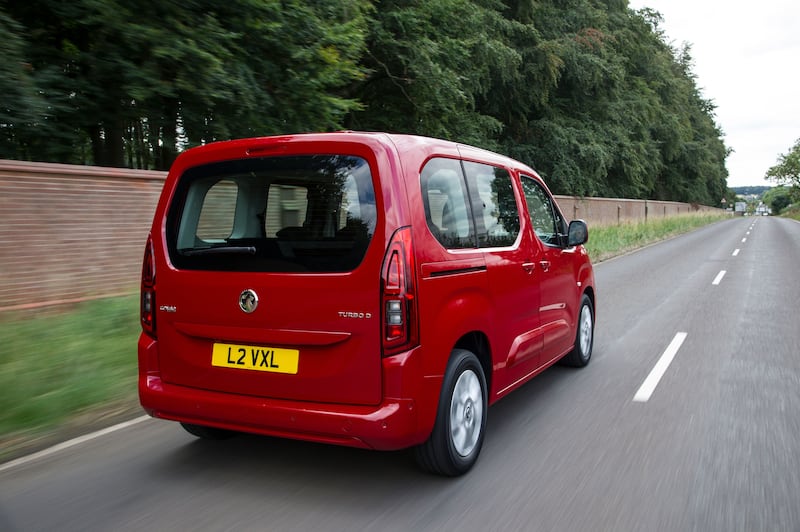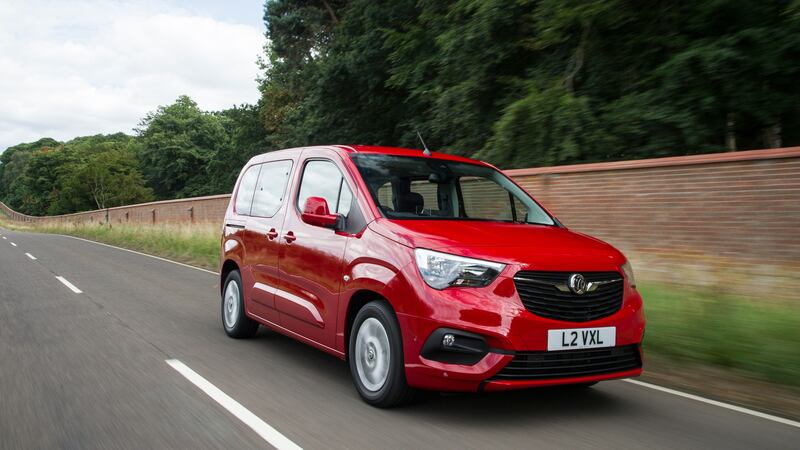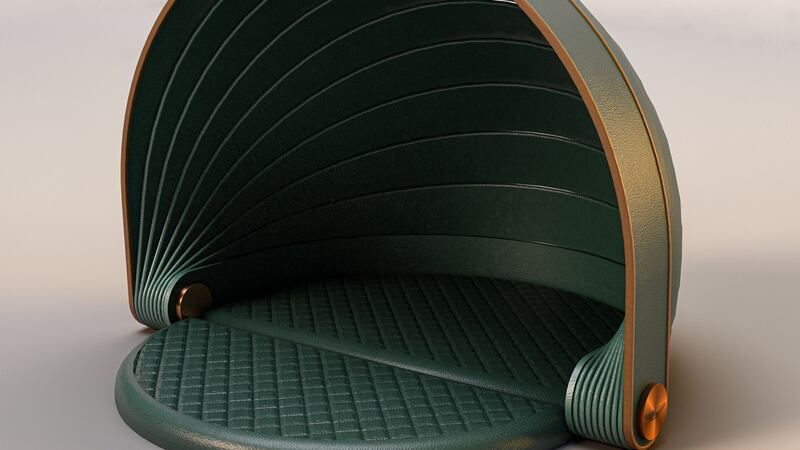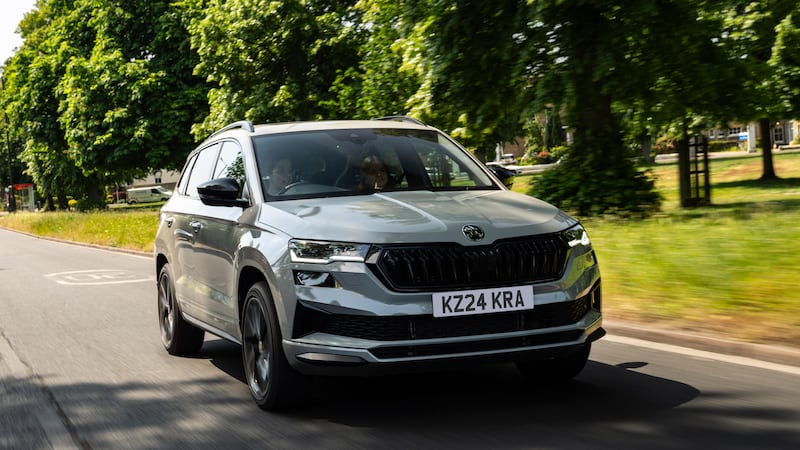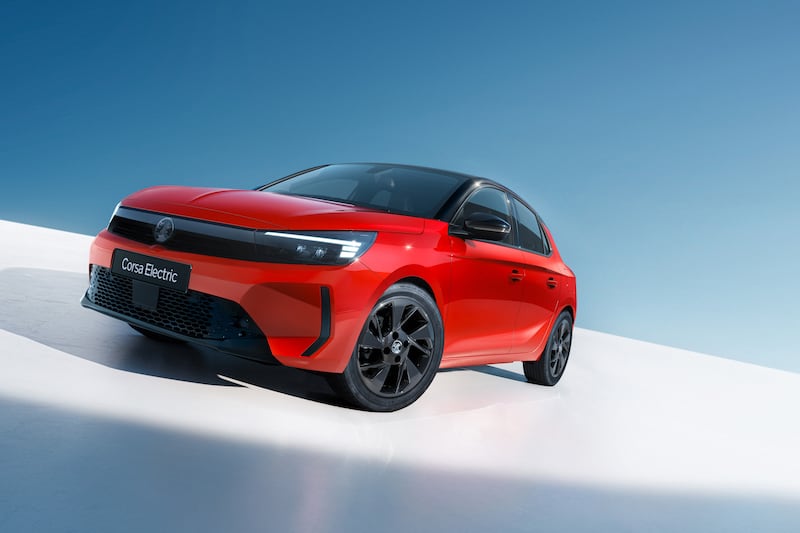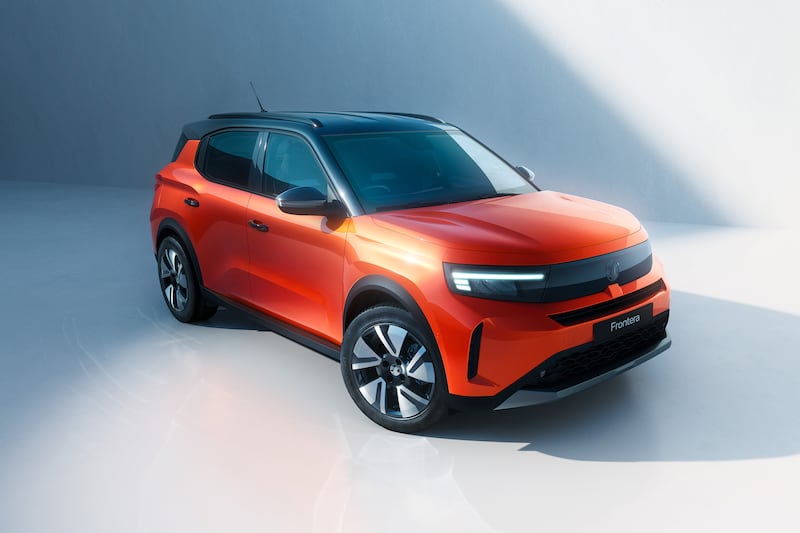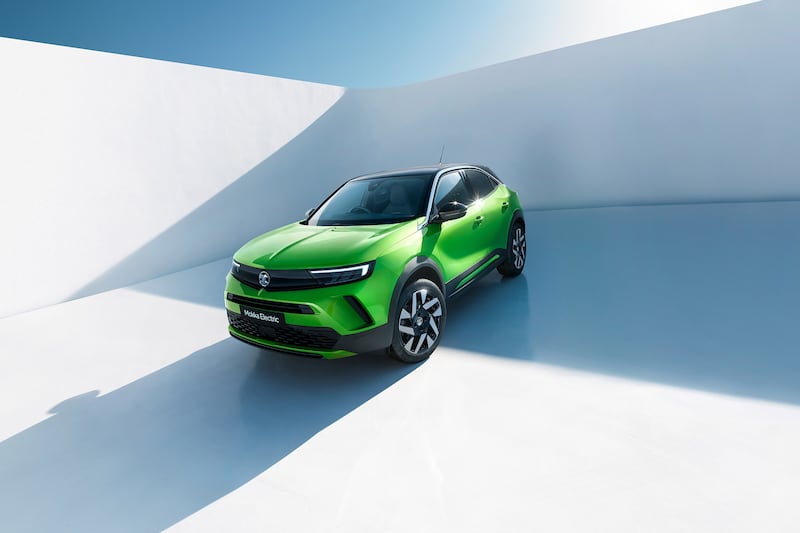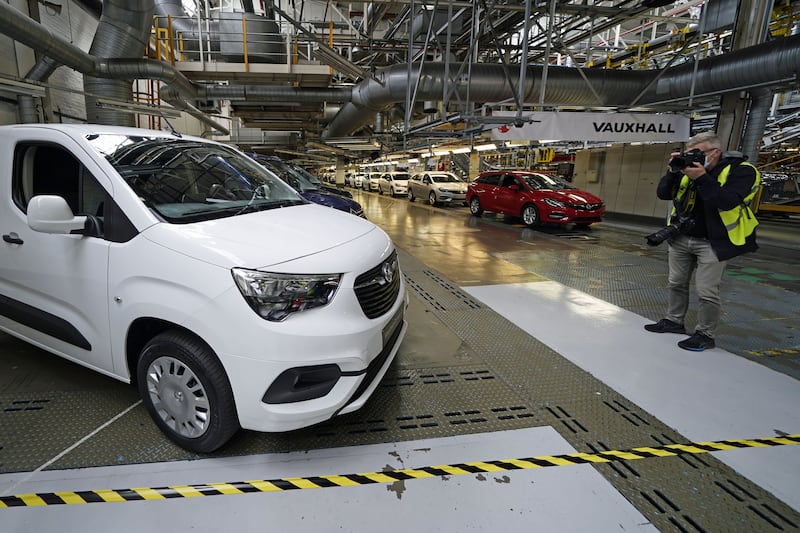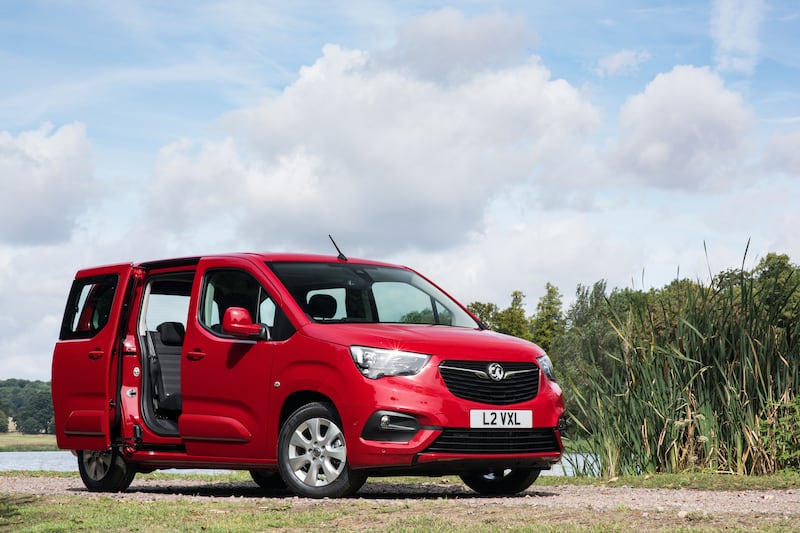
IF you have kids, muddy wellies and outdoorsy hobbies in your life - activities like camping, mountain biking and dog walking - then the car on these pages should be on your wishlist.
Called the Vauxhall Combo Life, which is one of the more puzzling car names out there, it is the latest entry in the van-with-windows category of practical and value-for-money family transport.
Until fairly recently, vans-with-windows were a bit, well, second rate. But that has changed with the latest breed of commercial vehicles, most of which are surprisingly - and you will be surprised - good to drive.
The Vauxhall's car-like credentials are bolstered by being based on a van which is, in turn, based largely on a car. So, beneath that box-on-wheels exterior is a car, rather than a ground-up commercial vehicle.
The Combo Life is the third new Vauxhall since the company was taken over by Peugeot. The Crossland X and Grandland X were the first two, and more will soon follow, with a new Corsa being particularly eagerly awaited.
So far, the tie-in with Peugeot - and its Citroen and DS sisters - seems to have been entirely beneficial. Vauxhall has got quick access to new cars - the Grandland X is quietly impressive - and a bunch of great engines.
The Combo Life's close relations, then, are the Citroen Berlingo and Peugeot's improbably named Rifter.
These all share the same basic platform that we know and admire already from its deployment in cars like the Peugeot 308, the 3008 and 5008 SUVs, Citroen's C5 Aircross, the DS 7 Crossback and the aforementioned Grandland X; such is the interwoven nature of modern car production.
As you will have gathered, modern car platforms - the way the engine, suspension, heating systems and electronics, including infotainment and safety systems are packaged - also offer manufacturers a wide degree of production flexibility.
That's why the Combo Life is offered in a 'regular' and 'XL' version. The larger version, at 4.75 metres in length, measures hefty 75cm longer than the standard car.
Both versions are conspicuous by just how child-friendly they are, and both wheelbases can be had with either five or seven seats.
My car was a short wheelbase five-seater but it still felt massive inside. It is appropriate to start at the back and work forwards for a car which wears its practicality and utility so proudly.
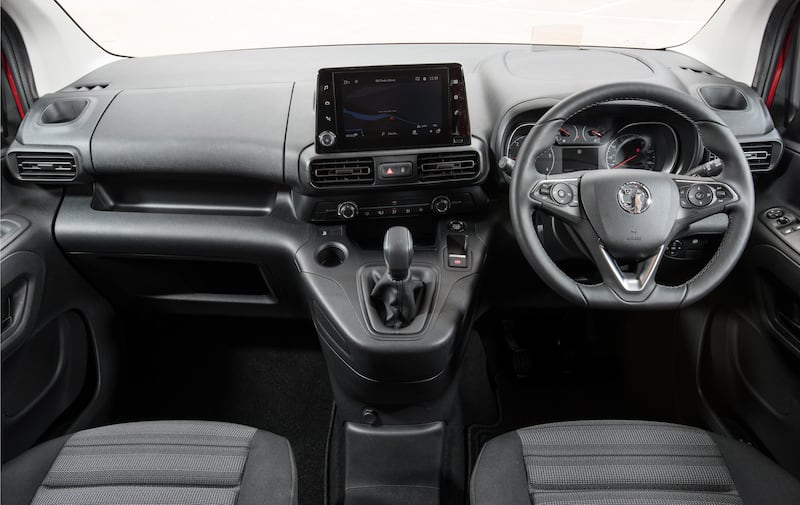
Fill the boot up to the windowline, and the Combi Life has 597 litres of volume - which is huge.
The boot is flat of sides and low of floor, too. The tailgate is massive, though.
Fold the seats - they split 60/40 - and volume climbs to 2,126 litres, which is vast for a car with the footprint of a family hatchback
The XL's figures are naturally larger, at 850 litres and 2,693 litres respectively, plus each of its middle seats can be individually folded. The third row of seats in the XL can be removed altogether.
The back seat is a comfy berth for adults, thanks to three individually-shaped seats and ample head and legroom, but kids will absolutely love it.
Sliding doors make access very simple, with the bonus of making getting in and out easy in the tightest of parking spaces.
Children seem to find they offer a bit of drama, too, and anyone who has to decant children from the back of a car on a regular basis will love the door arrangement.
Another winning child-friendly feature is the fact that the design of the seats makes installing three Isofix chairs at the same time not only possible but also fuss-free - and that is not something that can be said of all family cars.
Kids also love the sheer space on offer, and features such as the little tables which fold up from the backs of the front seats.
Moving forward, and the immediate impression for the driver and front passenger alike is that of space and light.
There's acres of headroom, even for a lanky like me, and large, deep windows that flood the interior with light.
In combination with an upright-ish driving position, it's easy to see out and, therefore, easy to drive.
The Combo Life's van origins may have their aesthetic downsides - its styling isn't going to give the designers at Mazda or Alfa Romeo sleepless nights - but there are abundant trade-offs in addition to its inherent practicality, such as the flat sides and tailgate which make the Vauxhall ridiculously easy to park and manoeuvre in tight spaces.
And if your experiences of vans are limited to an old Ford Transit borrowed to help move house a decade ago, you will be surprised by how pleasantly the Vauxhall drives.
In truth, even a modern Transit is a decent drive these days, but the Combo Life is very car-like in its manners. And while no-one will buy one for its B-road abilities, it may even be an upgrade for the drivers of a Zafira Tourer, which this car essentially replaces in the Vauxhall range.
Engines are turbocharged units familiar from various Peugeot, Citroen, DS and Vauxhall models.
Unleaded duties fall to a 1.2-litre three-cylinder unit offered with 108bhp, with diesel desires being taken care of by a 1.5-litre four-cylinder, with either 99bhp or 128bhp.
Transmissions, depending on engine, are five-speed and six-speed manuals, with an eight-speed automatic also offered.
All are front-wheel-drive, and the trick 'IntelliGrip' system seen elsewhere in the Peugeot/Citroen/DS/Vauxhall can be ordered to give a broader range of traction control in specific conditions, such as snow or mud.
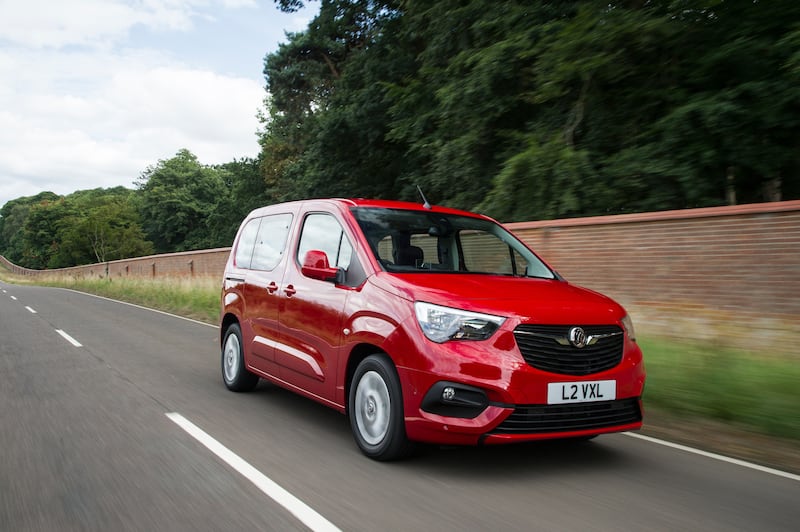
My test car had the most powerful diesel engine, and it felt a good match for the Combo Life - motorway cruising and overtaking was no trouble at all, and elsewhere it felt willing and flexible.
One of the most obvious benefits of Vauxhall's takeover by Peugeot is access to engines as good as these, though it is a shame the quality of the gearshift isn't of the same standard.
It is quieter than you might expect, too - especially given the fact it is basically a box on wheels - and while it isn't a car for back road blasts it never feels commercial or rough to drive.
It isn't the plushest of vehicles, but that to me seems entirely appropriate given the vehicle's target audience of busy families and outdoorsy types.
There are two trim levels - 'Design' and 'Energy' - and prices start from £20,135 for a petrol five-seater Design. The XL version adds £1,000. Seven-seater prices start at £22,235.
Whichever version you opt for, you get the same shedloads of space and practicality. Children will love it, too.
It's neither expensive to buy nor run, but the Combo Life does have an appeal beyond the purely rational and prosaic; as my week with it came to an end, I confess I had started to grow rather fond of it...
AT A GLANCE
Vauxhall Combo Life Energy 1.5 Turbo D (130PS)
Price: £23,185. As tested £25,670 with metallic paint £565, wireless phone charging £105, sat-nav system £450, head-up display £355, heated front seats and steering wheel £200, parking pack with rear-view camera and sensors £400, full-size spare wheel £110, IntelliGrip pack with advanced selectable traction control and all-weather tyres £410
Engine and transmission: 1.5-litre four-cylinder diesel turbo, six-speed manual gearbox, front-wheel-drive; 128bhp, 221lb.ft
Performance: Top speed 115mph, 0-60mph in 10.6 seconds
Fuel consumption and CO2: 65.7mpg (combined), 48.6mpg (real world), 113g/km
Car tax: £210 in first year, then £145 annually
Benefit in kind: 27 per cent
Euro Ncap safety rating: Four stars (91/81/58/68), 2018
